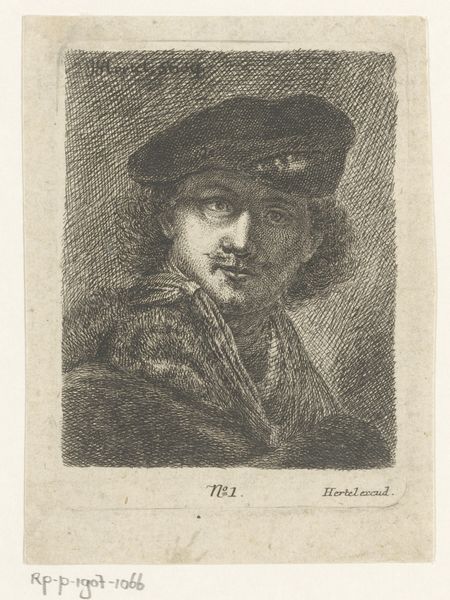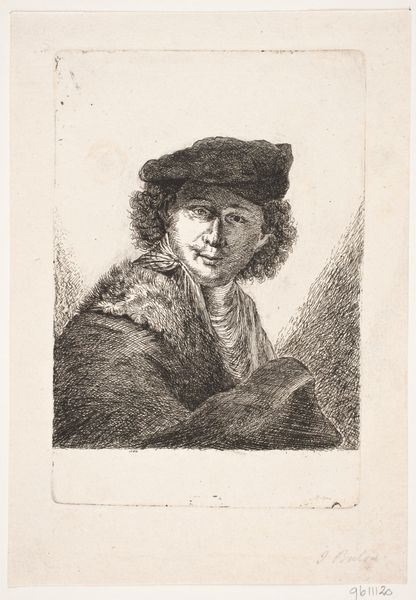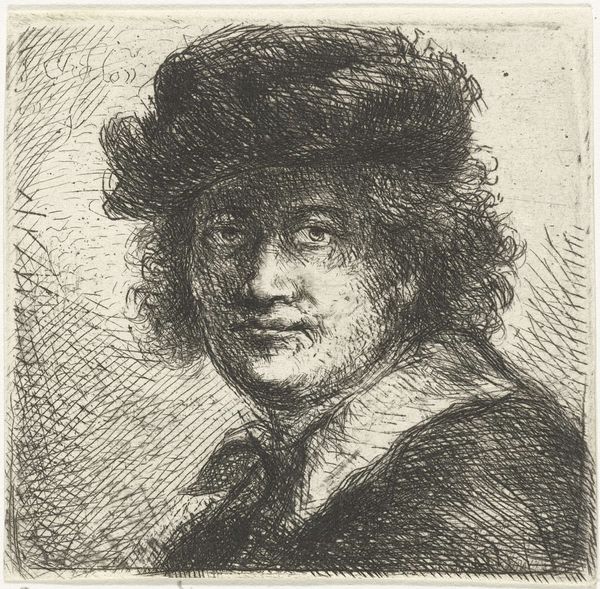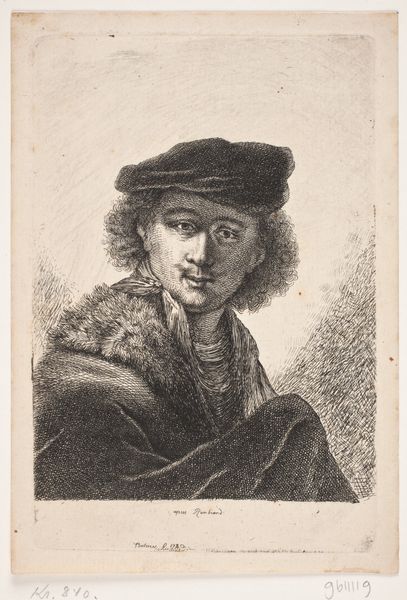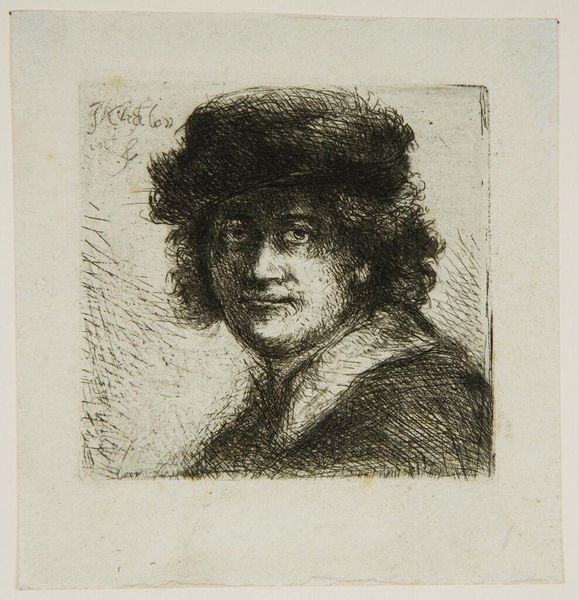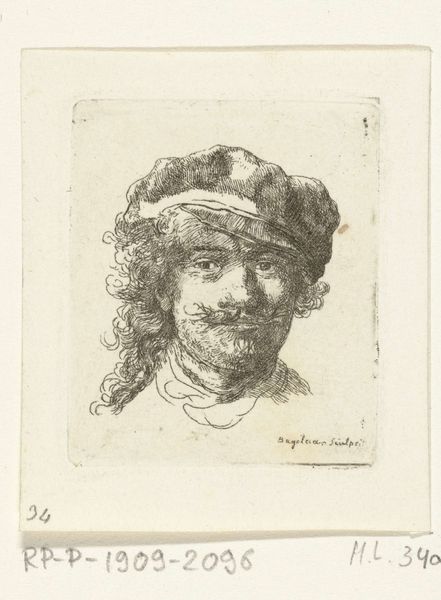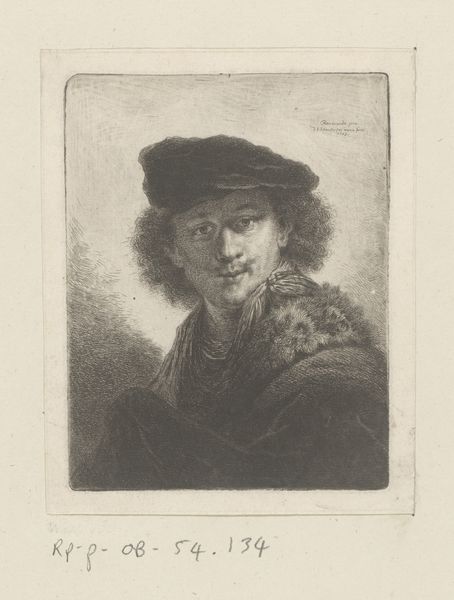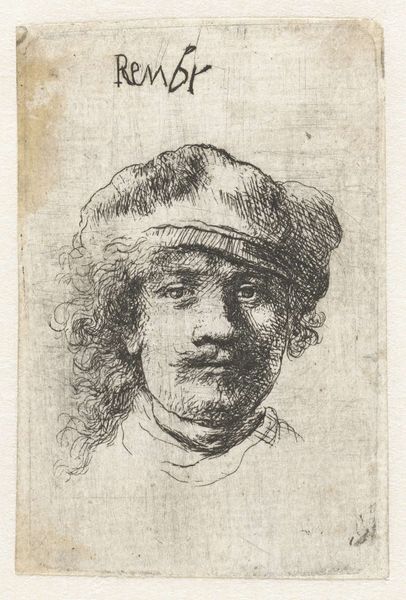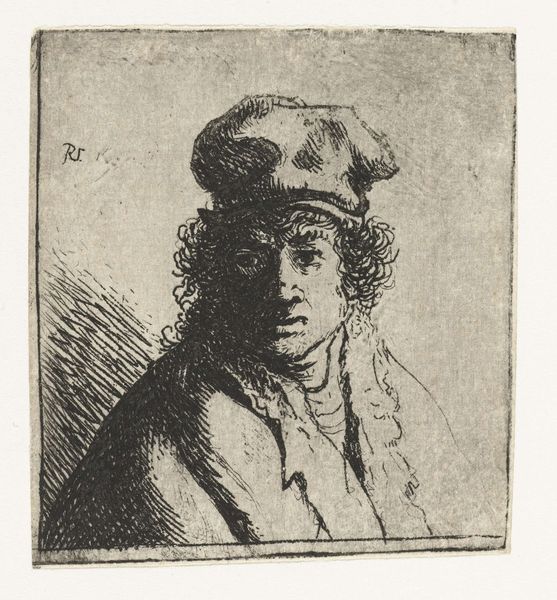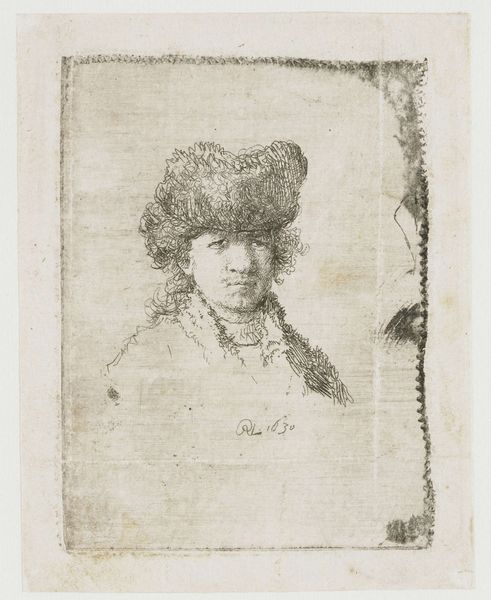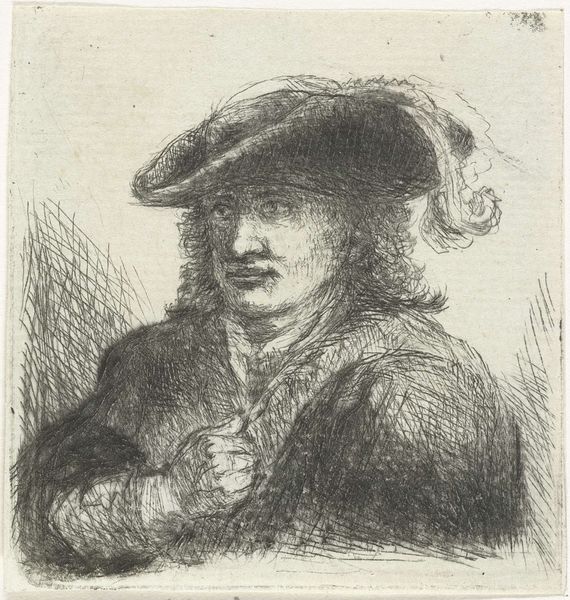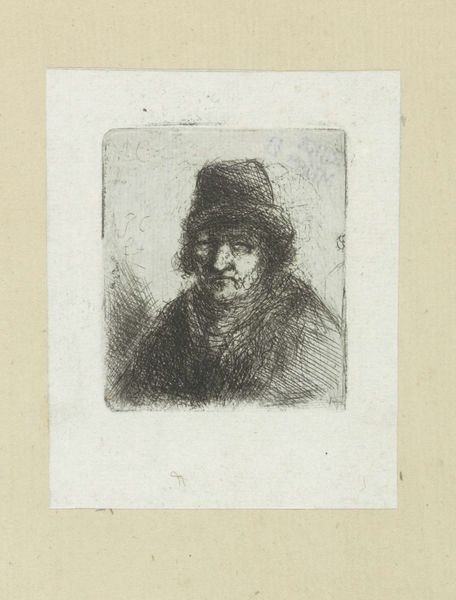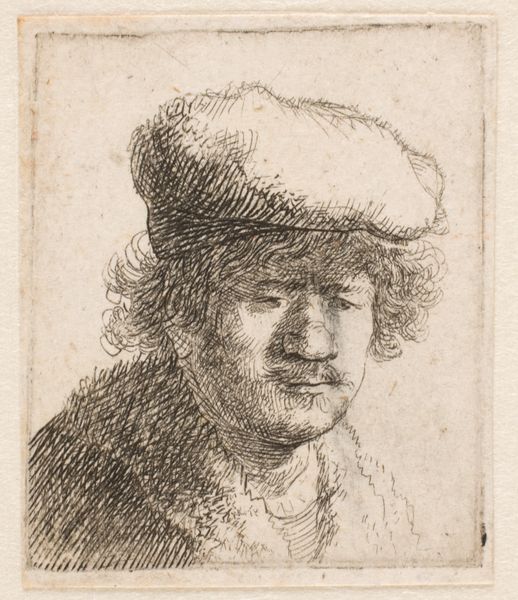
Dimensions: height 94 mm, width 73 mm
Copyright: Rijks Museum: Open Domain
Cornelis Justinus Geisweit van der Netten made this portrait of Rembrandt van Rijn using etching, a printmaking technique, in the mid-19th century. The process begins with a metal plate, usually copper or zinc, coated with a waxy, acid-resistant substance called ground. The artist then draws through the ground with a sharp needle, exposing the metal. When the plate is immersed in acid, the exposed lines are "bitten" or etched into the metal. The longer the plate remains in the acid, the deeper and darker the lines become, allowing for variations in tone and texture. After the etching process, the plate is inked, and the surface is wiped clean, leaving ink only in the etched lines. Finally, the plate is pressed against a sheet of paper, transferring the ink and creating a print. Here, we see the delicate lines that create this portrait, and how they capture the essence of Rembrandt's self-portraits. When we consider the effort, skill and traditions that the artist engaged with, we begin to understand the full meaning of the artwork.
Comments
No comments
Be the first to comment and join the conversation on the ultimate creative platform.
